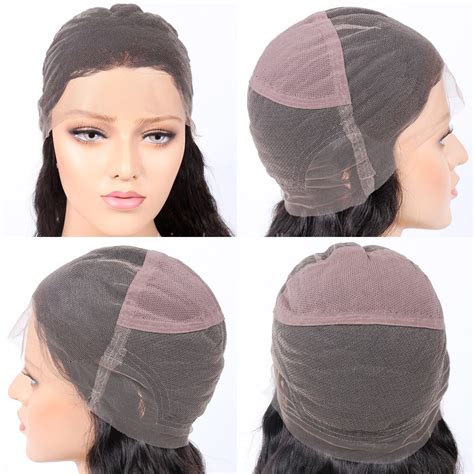Introduction

For those seeking seamless and natural-looking hair transformations, wig cap wigs have emerged as an indispensable solution. Offering superior comfort, breathability, and versatility, they provide a secure fit while concealing any imperfections or hair loss. In this comprehensive guide, we delve into the world of wig cap wigs, exploring their types, benefits, and the common mistakes to avoid.
Types of Wig Cap Wigs
Wig cap wigs come in a wide range of materials and designs to meet diverse needs. Here are the most popular types:
-
Lace Front Wigs: Featuring a lace panel that extends from the forehead to the crown, lace front wigs offer an undetectable hairline that seamlessly blends with the skin.
-
Full Lace Wigs: Constructed entirely from a delicate lace material, full lace wigs provide 360-degree coverage and the most natural-looking appearance.
-
Monofilament Wigs: Utilizing a thin, breathable monofilament base, monofilament wigs allow for maximum scalp visibility, creating an illusion of natural hair growth.
Benefits of Wig Cap Wigs
-
Scalp Concealment: Wig cap wigs effectively hide hair loss, thinning hair, scarring, or other scalp sensitivities.
-
Comfort and Breathability: The lightweight and airy materials of wig cap wigs ensure maximum comfort, preventing scalp irritation or excessive sweating.
-
Secure Fit: Designed with elastic bands or adjustable straps, wig cap wigs provide a snug fit, eliminating the need for adhesives or glue.
-
Versatility: Wig cap wigs can be styled in various ways, allowing users to experiment with different hair textures, colors, and lengths.
Common Mistakes to Avoid
-
Choosing the Wrong Size: Incorrect sizing can lead to discomfort and an unnatural appearance. Measure your head circumference accurately before selecting a wig.
-
Over-Styling: Excessive heat or hair products can damage the delicate materials of wig cap wigs. Handle them gently and use appropriate styling tools.
-
Neglecting Maintenance: Proper care and maintenance are crucial for the longevity of wig cap wigs. Follow the manufacturer’s instructions for cleaning and storage.
Pain Points and Motivations
Pain Points:
- Uncomfortable, itchy wigs that cause scalp irritation
- Visible hair loss or scalp imperfections
- Difficulty achieving a natural hairline
Motivations:
- Desire for a seamless and natural-looking hair transformation
- Increased self-confidence and improved appearance
- Freedom from the limitations of hair loss or thinning hair
FAQs
-
How often should I wash my wig cap wig?
– Every 7-10 wears, or more frequently if used daily. -
Can I use regular hair products on my wig cap wig?
– No, use products specifically designed for wigs to avoid damage. -
What is the difference between a lace front wig and a full lace wig?
– Lace front wigs have a lace panel only at the front, while full lace wigs are constructed entirely from lace. -
How long do wig cap wigs last?
– With proper care and maintenance, they can last up to 2 years. -
Can I wear a wig cap wig over my natural hair?
– Yes, but it is recommended to protect your natural hair with a wig cap or scarf. -
What is a monofilament wig?
– A wig constructed with a thin, breathable monofilament base that creates an illusion of natural hair growth. -
How do I choose the right size for a wig cap wig?
– Measure your head circumference and refer to the manufacturer’s sizing charts. -
What are the benefits of wig cap wigs over traditional wigs?
– Superior comfort, breathability, natural-looking appearance, and secure fit.
Conclusion
Wig cap wigs offer an innovative solution for those seeking to conceal scalp imperfections or transform their appearance. With their ability to provide complete scalp coverage, comfort, and versatility, they have become a popular choice for individuals seeking a seamless and natural-looking hair transformation. By understanding the different types, benefits, and common mistakes to avoid, you can harness the power of wig cap wigs to enhance your confidence and embrace your personal style.
